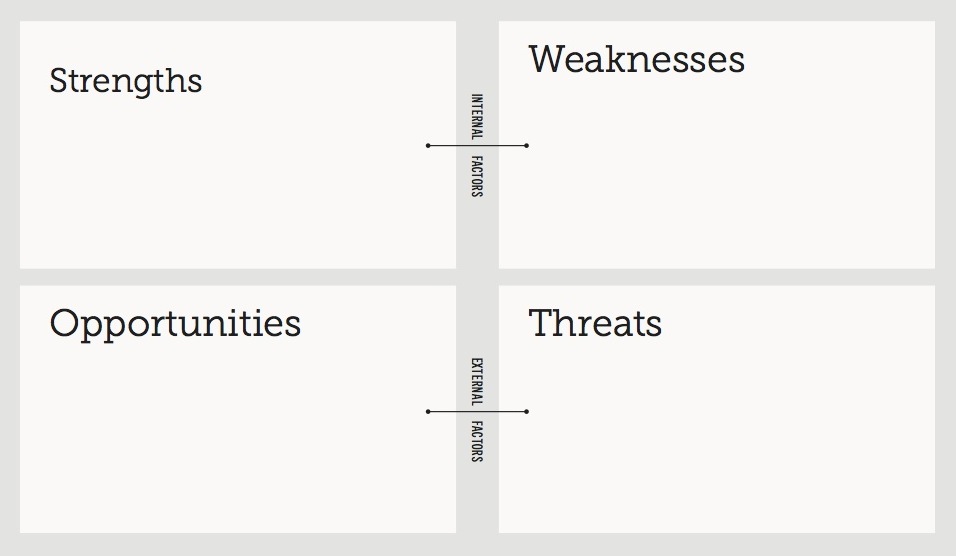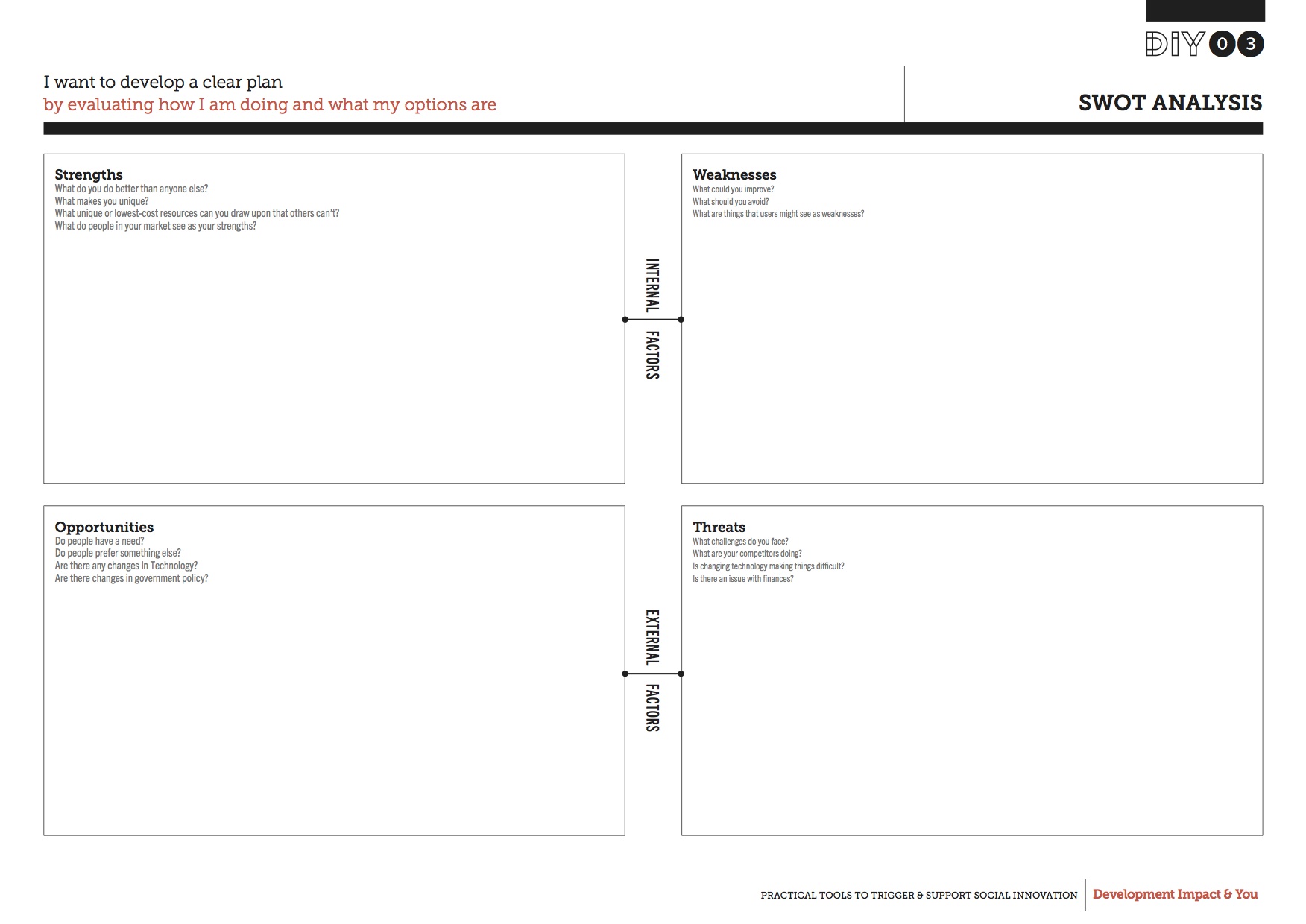
A SWOT Analysis can be made for an entire organisation, but also for individual departments, programmes or even projects. Complete each of the quadrants in the worksheet according to what you see as your or your organisation’s strengths and weaknesses as well as the external opportunities and threats that may help or hinder you.
Here are some tips to help you further:
Be prepared: Get your facts and figures in place before you do the analysis.
Be comprehensive: Include all details, from the smallest ones (e.g. for issues at the most micro level like discussions in your team) to large ones (e.g. for new government regulation) that can impact your work.
Be self-critical: SWOT analysis is there to stimulate critical reflection, not just to please yourself and/or others. Be open and don’t get defensive. It is normal to have weaknesses as well as strengths, and to see both threats and opportunities. Sometimes talking about weaknesses or threats can even help you to recognise strengths and opportunities.
Test your analysis with others: Include others or maybe even ask an outsider (like your partner organisation) to do the same exercise and compare their views with your findings.
Repeat the analysis: As you go on with your work, new learnings and factors are bound to come up. Re-visit the SWOT Analysis to align your work and its course once every quarter or twice a year.
Use it as a guide: Don’t rely on SWOT too much – It’s a guide that can help scope the way for further development.
Key source of inspiration:
MindTools (1996) SWOT Analysis.
Available online from: https://www.mindtools.com/amtbj63/swot-analysis

